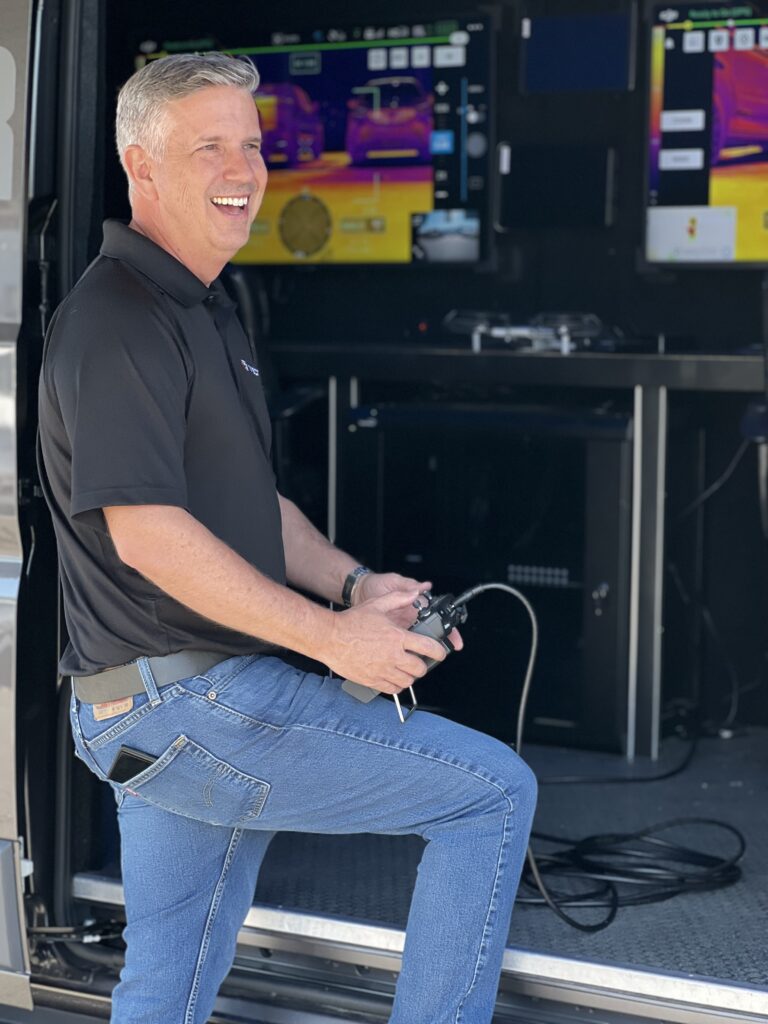By Brendon Bartholomew, President — Vector Aerial
Drones are the unblinking eye giving public safety officers the upper hand in our cities today. While shrinking budgets and reduced staffing have security teams under pressure, drones are the force multiplier that helps them maintain an advantage.
I’ve been equipping the security sector with this evolving technology from day one. After 20 years of active duty with Air Force Special Operations, I moved into unmanned aircraft and was one of the first to train public safety agencies in its use. By 2017, around 347 police departments, sheriffs’ offices, emergency medical services, and fire departments across the country were using drones. Atlas of Surveillance reports that over 1,172 US police departments employ unmanned aircraft.
The benefits of autonomous drones are revolutionizing safety and security.
Working security involves long, mundane hours punctuated by rare moments of high intensity. Humans are prone to fatigue, lose concentration, and make errors. Drones are equipped with artificial intelligence (AI) that operates reliably and continuously. Security drones patrol and stream data until the software detects objects that post threats.
Security drones patrol large facilities and reduce the need for on-site officers. Installing and maintaining cameras in expansive areas such as oil fields, quarries, solar farms, mines, warehouses, and pipelines is costly. Drones monitor these remote locations and prevent property damage, theft, and equipment malfunction.
Because drones cover large areas and can collect data autonomously, they offer an extremely useful areal perspective. On the ground, your ability to see the full picture is hindered by obstacles, but a drone’s bird’s-eye view provides situational awareness. For example, large crowds are easier to monitor from above. Drones also survey parking lots and scan license plates for unauthorized vehicles.
As security tools, drones are uniquely capable of assessing hazardous locations. By collecting areal images, drones detect threats before people venture into dangerous areas. They can stream live videos, pursue suspects, and provide real-time tracking data. Security teams are better equipped to respond appropriately to the information in hand.
A case study of security drones in action
Most police departments recognize the enormous value drones bring to law enforcement. Although some larger departments and sheriff’s offices have access to helicopters, drones cost a fraction of the price and are much easier to deploy — especially when greater numbers are needed. Drones enable police agencies of all sizes to gather tremendous amounts of information, increase situational awareness and speed up time-sensitive decisions.
When the police department of Tempe, Arizona, integrated drones into daily field operations, their first goal was to increase the safety of officers on the ground. I think this is the primary reason for drone deployment; we operate drones remotely to keep first responders out of harm’s way. Drones arrive first, survey a situation, and allow officers to formulate the safest response, providing key information and intel that keeps officers and others safe.
Currently, Tempe PD owns and operates numerous drone platforms in the field. They deploy unmanned aircraft to the scenes of automobile accidents, high-risk warrants, and everything in between.
Recently, for example, calls alerted Tempe’s police officers that a protest was escalating out of control. A drone arrived and streamed real-time footage of the vandalism and property damage. Prosecutors could then use that footage as evidence to support an arrest.
The debate around drones in public security
Despite the advantages, there has been debate surrounding using drones in public security. Because drones record people’s movements without permission, some have raised privacy concerns and demanded clear drone-generated data policies. Currently, businesses are allowed to employ private drone security systems just as they are permitted to install private security cameras.
Until recently, the debate over the use of security drones has also centered around compliance with the FAA’s (Federal Aviation Administration’s) regulations. Recently, however, in April 2021, the FAA loosened its restrictions for commercial operations of small drones. Before this, drones could not fly over crowds, during night hours, or remotely without an FAA waiver. Today, drone technology can be used to ensure security in all of these situations.
The future of drones in public safety
The global market for commercial drones totaled $13.44 billion in 2020 and is predicted to grow by 57.5% over the next five years. Clearly, this technology is expanding.In the past, these operations consisted of one ground controller flying a single drone. Today, they are moving toward fleets of autonomous drones deploying remotely and formulating intelligent responses based on their on-site collected data. In essence, drones will be the first responders of the future — imagine drones autonomously launching during a 911 call and providing a view of the scene before officers even arrive. This evolving technology ensures the responses from security teams can become increasingly quicker and safer.
Brendon Bartholomew is the president of Vector Aerial. He has more than 20 years of United States Air Force Special Operations and Air Mobility experience flying multiple platforms, leading several organizations, multiple aspects of strategic planning, strategic communications, budget development, research and development, and legislative affairs.
.
.
Follow Brilliance Security Magazine on Twitter and LinkedIn to ensure you receive alerts for the most up-to-date security and cybersecurity news and information.


